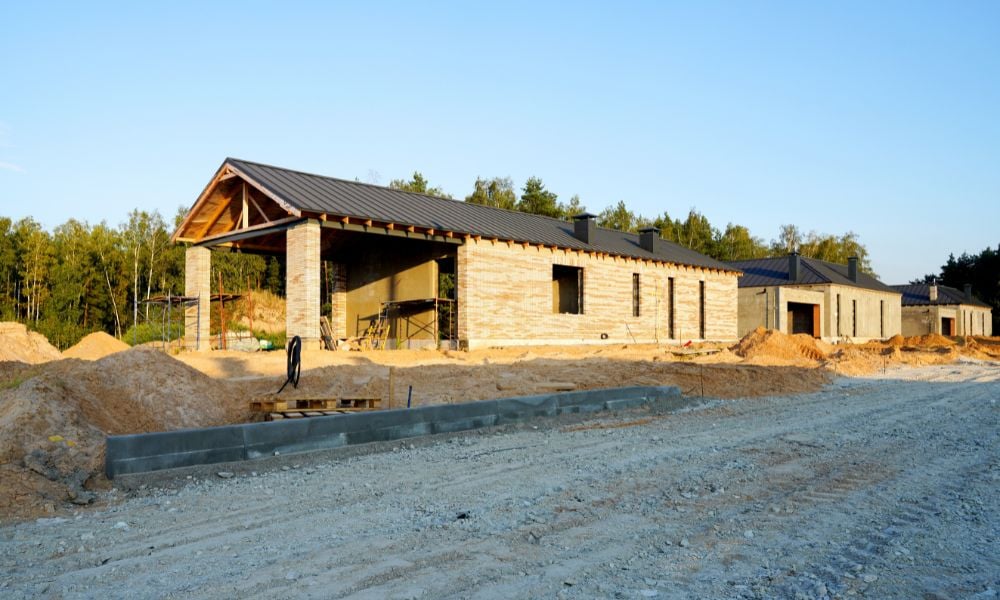Industry leaders weigh in on whether the Liberals' massive prefab funding plan can realistically double housing starts

Now that the Liberals have secured another term in office, the big question is whether they can deliver on their ambitious promises, particularly a $26 billion push into prefabricated homes through a new agency called Build Canada Homes (BCH).
The plan includes $25 billion in debt financing and $1 billion in equity for Canada’s prefab and modular homebuilders. The goal is to cut construction times by as much as 50%, reduce costs by 20%, and lower emissions by 22% compared to traditional building, while using Canadian technologies like mass timber and softwood lumber.
BCH also plans to issue bulk orders to manufacturers, aiming to create steady demand and boost apprenticeships to strengthen the skilled trades workforce.
Will It work?
Prefab housing is often promoted as a faster, less labour-intensive way to tackle Canada’s massive housing shortage. Prime Minister Mark Carney’s broader pledge is to double residential construction over the next decade, aiming for 500,000 homes per year.
But the challenge is that while the idea looks great on paper, scaling up prefab in the real world isn’t so easy.
“Certainly, the benefit to factory-built housing — the big one — is that it increases productivity,” said Kevin Lee, CEO of the Canadian Home Builders' Association (CHBA). “Especially if we're looking to increase housing starts at a time when we already have a labour shortage, that increased productivity and the ability to build more homes with the same number of people [is critical].”
A problem, Lee explained, is that Canada’s housing market is prone to dramatic ups and downs. Prefab requires large upfront investments in facilities and overhead, and that’s risky when market demand fluctuates.
“The challenge to significantly ramping up more factory-built housing is that we have a very boom-bust housing market in Canada... and so what you're talking about when you move to more factory-built is very significant investments in facilities and overhead, which is good when times are good and very problematic when times slow down,” Lee added.
Even now, modular builders in Ontario and British Columbia are going through what Lee called “challenging times,” despite typically having smaller teams and lower overhead. Scaling up those operations could leave them even more exposed during downturns.
He stressed that the main value of prefab isn’t necessarily about saving money — it’s about speed and efficiency.
“Modular and factory-built doesn't tend to be cheaper. It's faster — that's its real benefit — and it takes less people to build more houses. But there are different barriers,” Lee said.
How loans are structured will matter
The $26 billion financing injection could help, but only if it’s designed with flexibility, Lee emphasized.
“Will an injection of loans help more investment be good? Yes, it can be… but how you structure those loans will be very important too. In other words, you know, you can have all the best intentions of paying back over, you know, 10 years, but if the market slows down, you need the flexibility to pay over a longer period.”
The CHBA’s own Sector Transition Strategy, published in February 2024, backs this up, recommending that builders repay loans based on their actual output rather than being locked into fixed timeframes.
International comparisons often come up, but Lee said it’s not so straightforward.
“In the case of Japan, they have a shrinking population and are at crisis levels in terms of numbers of workers. They've lost over half of their carpenters over the past decade, so that, in and of itself, necessitates going to a manufacturing approach,” he explained.
Sweden’s situation is also unique, Lee noted, due to harsh weather driving year-round construction indoors and the country’s smaller population and geography.
“Canada is much more spread out. [...] If you point to the United States and Australia, which are much more similar to Canada, they have very, very little factory-built, modular building going on,” Lee said.
So, how far can Carney’s prefab bet take Canada?
Read more: Carney backs modular housing as affordability crisis solution
“To really fix a complex problem, you need to come at it from every different direction,” Lee said.
“And whether it's financing, whether it's mortgage rules, whether it's the building code, whether it's streamlined regulations, whether it's reducing taxes — none of those things, in and of themselves, will help us double housing starts. But if we go at all of them, then yeah, we have a chance to really close that housing gap.”
Make sure to get all the latest news to your inbox on Canada’s mortgage and housing markets by signing up for our free daily newsletter here.



